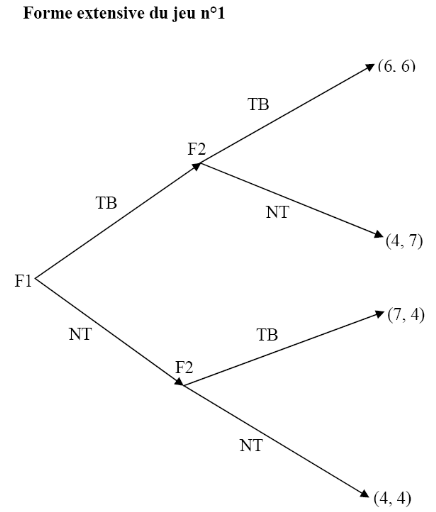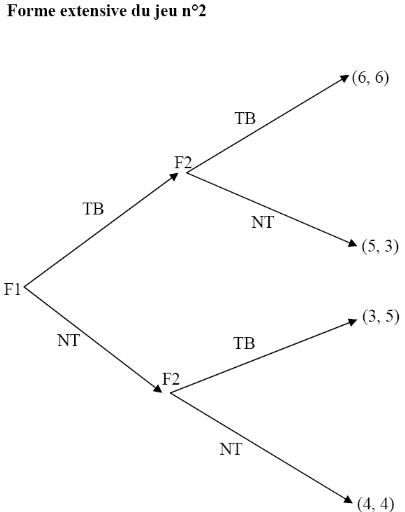BIBLIOGRAPHIE
ALIDI, A. (1996): A multiobjective optimization model for the
waste management of the petrochemical industry. Applied Mathematical Modelling
20, 925-933.
ANDREW Emery et al (2006): Environmental and economic
modelling: A case study of municipal solid waste management scenarios in
Wales.
ANOMANYO Edward Dostseh (2004): Integration of municipal solid
waste management in Accra: bioreactor treatment technology as an integral part
of the management process
APOTHELOZ Sébastien (1998) : Contribution au
développement du système d'information environnemental
destiné à la ville de Ouagadougou
ASHAYERI, J.et L. F. GELDERS (1985): "Warehouse Design
Optimization," European Journal of Operational Research, Vol. 21, pp.
285-294.
ARCENS Marie-Thérèse (1997): La participation de
la communauté à la gestion des déchets solides.
ATTAHI Koffi (2000): Urbanisation et gestion des
déchets en Afrique- le problème et ses fondements
théoriques.
BAETZ, B. W. (1990): "Optimization/Simulation Modelling for
Waste Management Capacity Planning." Journal of Urban Planning and
Development, ASCE, 116(2), 59-79.
BAETZ, B. W. and A. W. BEEBE (1994): "A Planning Model for the
Development of Waste
Material Recycling Programmes," Journal of Operational
Research Society, 45(12), 1374-1384.
BELLEHUMEUR, C., VASSEUR, L., ANSSEAU, C., Marcos, B., (1997):
implementation of a multicriteria sewage sludge management model in the
southern Quebec municipality of Lac-Megan tic, Canada. Journal of Environmental
Management 50, 51-66.
BERGER, C., SAVARD, G., WIZERE, A. (1999): an optimization
model for integrated regional solid waste management planning. International
Journal of Environment and Pollution 12, 280-307.
BEUKEURING Pieter van, Madhushree SEHKER, Reyer GERLAGH and
Vijay KUMAR: Analysing Urban Solid Waste in Developing Countries: a Perspective
on Bangalore, India.
BODNER, D. A., T. GOVINDARAJ, K. N. KARATHUR, N. F. ZERANGUE
and L. F. McGinnis (2002):"A Process Model and Support Tools for Warehouse
Design," in Proceedings of the 2002 NSF Design, Service and Manufacturing
Grantees and Research Conference.
BOYCKO, M., Andrei SHELEIFER, and Robert VISHNY (1996): A theory
of privatization, Economic Journal 106: 309-19.
CHANG, C.T., H. WANG, J.R., (1996): A multiobjective
programming approach to waste minimization in the utility systems of chemical
processes. Chemical Engineering Science 51, 3951-3965.
CHANG, N.B., WANG, S.F. (1996). Solid waste management system
analysis by multiobjective mixed integer programming model. Journal of
Environmental Management 48, 17-43.
CHANG, N.B., WEI, Y.L. (1999): Strategic planning of recycling
drop-off stations and collection network by multiobjective programming.
Environmental Management 24, 247-263.
DALEMO, M., SONESSON, U., BJORKLUND, et al, (1997): A
simulation model for organic waste handling systems Part 1: Model description.
Resources, Conservation and Recycling 21, 17-37.
DESACHY Christian (2001): Les déchets, une
sensibilisation à une gestion écologique.
CARLTON Dennis W.; Jeffrey M. PERLOFF (1998) :
économie industrielle ; 2ème édition De
book (p.67-77).
DOUCOURE Djibril et El Housseynou LY (2003) :
connaissance des coûts et maîtrise des flux financiers par les
collectivités publiques
DOBBS, Ian M. (1991): "Litter and Waste Management: Disposal
Taxes versus User Charges" Canadian Journal of Economics
ESMALILI, H. (1972): Facility selection and haul optimisation
model. Journal of the Sanitary Engineering Division-ASCE, 1005-1021.
ERIKSON, O., FROSTELLl, B. et al, (2002) : A simulation
tool for waste management. Resources, Conservation and Recycling 36,
287-307.
FOLLEA Vincent Françoise Brunet et al (2001) :
Revue comparative des modes de gestion des déchets urbains
adoptés dans différents pays de la ZSP
FOLZ, David H. and Joseph M. HAZLETT (1991): "Public
Participation and Recycling Performance: Explaining Program Success"
FULLERTON, DON and Thomas C. KINNAMAN (1995): "Garbage,
Recycling, and Illicit Burning or Dumping" Journal of Environmental
Economics and Management
GARRICK LOUIS and Jhih-Shyang SHIH (2002): A Flexible
Inventory Model for MSW Resources for the Future
GUESNERIE Roger (2004): «Sustainable development and cost
benefit analysis
HALDI John et D. WHITCOMB (1967): Economies of scale in
industrial plants. Journal of political economy 75: 373-85.
HARAHAP, Z.A. (1984): Recycling potential of solid waste at
sources and in disposal sites in Jakarta, Indonesia. Research Study Project
Report no. EV-89#177;9. Asian Institute of Technology, Bangkok, Thailand.
HELMS, B., Clark, R.(1974): Locational models for solid waste
management. Journal of Urban Planning and Development-ASCE 97, 1-13.
HIGHFILL, Jannett; Michael McAsey; and Robert WEINTEIN (1994):
"Optimality of Recycling and the Location of a Recycling Center" Journal of
Regional Science
HUANG G.H. Y.P. Lia (2005): An inexact two-stage mixed integer
linear programming method for solid waste management in the City of Regina.
HUNT James B.; Jonathan B. HOWES; Gary E. Hunt (1997):
Analysis of the Full Costs of Solid Waste Management for North Carolina Local
Governments
JENKINS, L., (1982): Parametric mixed integer programming: an
application to solid waste management. Management Science 28, 1270-1284.
JOHNSTON John (1960): Statistical cost analysis. New York:
McGraw-Hill
KEELER, Andrew G. and Mitch RENKOW (1994): "Haul Trash or Haul
Ash: Energy Recovery as a Component of Local Solid Waste Management"
Journal of Environmental Economics and Management
KEMPER, Peter and John QUIGLEY (1976): The Economics of
Refuse Collection (Cambridge, Massachusetts: Ballinger Publishing
Company).
KOULDIATI Jean, EVENS Emmanuel et al (2004) : Gestion
maîtrisée des déchets solides urbains et de
l'assainissement dans les PED
MOUSTAFA Mohamadou (1996) : Analyse des déterminants
des déchets ménagers à Ouagadougou : une étude
sur les cartiers populaire et résidentiel (mémoire de DEA)
NASIR Mohd Hassan et al (2000): Waste recycling in Malaysia:
problems and prospects
NASIR, M.H., Zainur, D.A.M. et NASIMAN, S, (1996):
Technological and economic evaluation of solid waste scavenging and recycling
practices.
NASIR, M.H., Rakmi, A.R., KAMIL, M.Y. et NOR Azmin, S. (1995):
Issues and problems of solid waste management in Malaysia. National Review of
Environmental Quality Management in Malaysia. Kuala Lumpur, Malaysia: PWTC.
PERLACK, R. D. et C. E. Willis. (1985): "Multi-objective
Decision-making in Waste Disposal Planning." Journal of Environmental
Engineering, ASCE 111(3): 373-385.
POWELL, J. (2000): The potential for using life cycle
inventory analysis in local authority waste management decision making. Journal
of Environmental Planning and Management 43, 351-367.
ROUWENHORST, B., B. Reuter, V. STOCKRAHAM, G. J. van HOUTUM,
R. J. Mantel and W. H. M. ZIHM: "Warehouse Design and Control: Framework and
Literature Review," European Journal of Operational Research, Vol.
122, pp. 515-533.2000
SAID, Atri and Thomas SCHELLENBERG (1995): "Efficient
Management of Household Solid Waste: A General Equilibrium Model»
Public Finance Quarterly
SAVAS, Eugene (1977): An Empirical Study of Competition in
Municipal Service Delivery,
Public Administration Review 37(6): 717-24.
SHMELEVA S.E., J.R. POWELL (2004): Ecological-economic
modelling for strategic regional waste management systems
SLOBODAN P. Simonovic (2000): Last Resort Algorithms for
Optimization of Water Resources Systems University of Manitoba Natural
Resources Institute.
SNIGDHA Chakrabarti, Prasenjit SARKHEL (2003): Economics of
Solid Waste Management: A Survey of Existing Literature Economic Research Unit
Indian Statistical Institute
SOULAMA S. et ZETT J. B. (2002) : économie des
organisations coopératives et de type coopératif. CEDRES-EDTIONS
collection « théories économiques et manuel de
cours »
STEVENS Edwards, F. and Barbara (1978): The Provision of
Municipal Sanitation Services by Private Firms: An Empirical Analysis of the
Efficiency of Alternative Market Structures and Regulatory Arrangements,
Journal of Industrial Economics 27(2): 133-
STENIS Jan (2005): Industrial management models with emphasis on
construction waste; Lund institute of technology (these de doctorat).
THOMAS B. SCHUMAN Robert A. BOHM et al (1997): Analysis of
National Solid Waste Recycling Programs and Development of Solid Waste
Recycling Cost Functions: A Summary of the Literature
THOMAS Jacobson TALLAHASSEE (2002): solid waste management at
Florida State University
TRUITT, M.; LIBIEBNMAN, J.; KRUSE, C. (1969): Simulation model
of urban refuse collection. Journal of the Sanitary Engineering Division-ASCE,
289-298
WALLS Margaret, Molly MACAULEY, and SOREN Anderson (2002): The
Organization of Local Solid Waste and Recycling Markets: Public and Private
Provision of Services
WEST, Jonathan P.; Richard C. FEIOCK; and Stephanie J. LEE
(1992): "Municipal Solid Waste Management and Recycling: Strategies and
Issues"
WILLIAMSON, Oliver E. (1979): Transaction Cost Economics: The
Governance of Contractual
Relationships, Journal of Law and Economics 22:
233-61.
WILLIAMSON, Oliver E. (1999): Public and Private
Bureaucracies: A Transaction Cost
Economics Perspective, Journal of Law, Economics, and
Organization 15(1): 306-42.
WISMAN, A. Clark (1991): "Impediments to Economically
Efficient Solid Waste Management"
XIANGYOU Wu Regnia; SASKATCHEWAN (1997): Inexact Nonlinear
Programming and Its Application to Solid Waste Management and Planning
Site web
www.bekon.lth.se
www.elsevier.com
www.emse.fr
www.epa.gov
www.fcm.ca
www.mairie-ouaga.bf
www.nrc-recycle.org
www.rff.org
Annexes 1 : la
résolution des jeux
Résolution du jeu n°1
L'association des femmes pour le traitement et la valorisation
des déchets (AFTVD) a signé un accord de
rémunération mensuelle fixe avec la direction de la
propreté de la commune urbaine de Ouagadougou (CUO). Chaque femme est
ainsi rassurer de recevoir un salaire fixe et uniforme quelque soit le volume
de déchets traités. La rationalité individuelle va pousser
chaque femme à chercher le maximum de gain. Les gains sont donnés
par l'arbre du jeu n°1. Les gains représentent à la fois le
salaire, la dépense en énergie physique, et tous les autres
coûts assimilés au travail humain. Soit F1 et F2 deux femmes de
l'AFTVD, les gains respectifs (GF), de chaque femme selon son comportement,
sont données par (GF1, GF2).
Supposons que la femme F1 décide de fournir beaucoup
d'efforts (TB).Si sa collègue F2 prend également l'option (TB)
chacune obtient un gain mensuel de 6. La rationalité individuelle
faisant, F2 prendra l'option de ne pas travailler (NT) car en se moment elle
obtient un gain supérieur (7). Dans ces circonstances, F1 obtiendra un
gain inférieur (4). F1, par ce raisonnement se rend compte que la menace
de sa collègue de se comporter en passager clandestin si elle
décide de travailler est crédible. F1 étant rationnelle et
insidieuse préférera prendre l'option (NT) où au pire des
cas chacune d'elle s'en sort avec un gain de 4. Par un raisonnement analogue F2
jouera l'option (NT) qui lui assure, quelque soit le comportement de l'autre,
un gain au moins aussi élevé qu'en prenant la stratégie
(TB). Chacune des femmes de l'AFTVD sait alors que les autres femmes savent
qu'elle sait qu'elles se comporteront en passagers clandestins. La meilleure
réponse de chacune d'elle est de se comporter en passager clandestin
(NT).

Source : construit
à partir de la matrice de gain du tableau n°6
La résolution du jeu
n°2
L'équilibre du jeu n°1 ne conduit pas à une
situation optimale ni pour la direction de la propreté ni pour l'AFTVD.
La résolution du problème de passager clandestin peut
néanmoins être évité. Pour ce faire les accords
signés entre ces deux institutions doivent être excitateurs. La
direction de la propreté peut donner un montant fixe de salaire par mois
pour une quantité donnée de déchets valorisés.
Ensuite, elle pourra fixer une prime par tonne de déchets
supplémentaire valorisés. Pour conserver la nature sociale de
l'activité aucune sanction ne doit être prévue dans le cas
où la production sera inférieure à la quantité
initialement fixée. L'octroi de la prime doit être individuel, car
si elle est collective on reviendra à une situation identique au jeu
n°1. La matrice de gain de ce nouveau cas est donnée par la matrice
de gain du tableau n°7. La rémunération de l'effort
individuel aidant chaque femme va mettre en oeuvre toutes ses
potentialités afin d'obtenir un gain maximum de 6. Dans cette
deuxième situation le comportement d'une femme n'influence pas celui de
sa collègue. On suppose que c'est le gain d'un revenu qui motive les
femmes. La rémunération étant maintenant fonction de
l'effort individuel l'AFTVD pourra valoriser plus de déchet par jour.

Source : construit
à partir de la matrice de gain du tableau n°7

Source : construit
à partir de la matrice de gain du tableau n°7
| 


